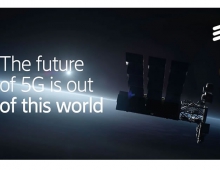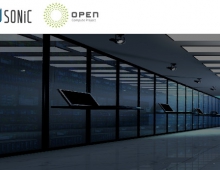
Ericsson And Nokia Extend 3G's Capabilities Toward 5G Era
With the 5G era to still be possibly 4-5 years away, Ericsson and Nokia are planning to demonstrate at Mobile World Congress this month new ways to accelerate the networks people are using now. Ericsson forecasts that 90 percent of the world's population will be covered by WCDMA/HSPA mobile broadband networks by 2021. At the same time, more than 50 percent of the world's population today still lacks internet access, especially in developing countries. This provides an opportunity for mobile operators.
Ericsson says it can double the performance of 3G WCDMA networks without replacing equipment at cell sites. A new software enhancement it calls "Flow of Users" gives subscribers a better way of sharing the local site's capacity. It controls how many devices are active on the network at a given time so there are never too many trying to share the cell. That means every user gets higher speed when they're on the cell and can also get off it sooner, making room for the next device in line.
Flow of Users usually speeds up service by about 50 percent, and it's part of a set of technologies that can double the average download speeds of 3G networks. A download speed of 2Mbps is typical for 3G, and new enhancements can take that as high as 4Mbps, Ericsson says. The technology is coming in the second quarter of this year.
Currently, hundreds of thousands of legacy 2G/GSM sites can only be upgraded to 3G/WCDMA by adding a complete WCDMA RBS or by completely replacing the GSM site with a GSM and WCDMA site. Ericsson is offering the Intelligent Antenna Sharing solution, the latest addition to Ericsson’s Mobile Broadband Expander concept. The solution removes this requirement by enabling antenna reuse between existing GSM sites and new WCDMA equipment, as well as reuse of site power, microwave and transport infrastructure. Reusing resources in this way can reduce TCO by more than 60 percent compared with building a conventional site, and supports accelerated rollout of 3G technologies.
Regarding 4G, both Ericsson and Nokia will show off at MWC new ways they can boost the capacity of LTE networks with new antenna technology and ways of combining multiple frequency bands. Mobile operators can't always get a single band with all the spectrum they need, but with carrier aggregation, part of LTE-Advanced, they can put separate bands together. Ericsson has shown 1Gbps with Australian carrier Telstra using five different bands ganged together. Now the company says it can go even faster and do it with just three bands, partly by using antennas that send out multiple streams of data over multiple paths. Those capabilities will also come out in the second quarter.
Nokia says it will tie two frequency bands together but also let mobile devices use bands from different cells. The company has demonstrated 4.1Gbps speed with China Mobile and Qatar-based carrier Ooredoo.
A pleasant surpise from Niokia will be the fact that the company will be combining multiple bands for uplinks. Uplink Carrier Aggregation and 64QAM modulation are introduced via software and combined to increase peak data rates in FDD-LTE cells by up to 150 Mbps, three times the maximum uplink speed of typical LTE networks today.





















